Today we have something that was really interesting, a 24-port 10Gbase-T switch with four SFP+ 10GbE and four SFP28 25GbE ports. The FS S5860-24XB-U with those specs will interest some of our readers, but there is more. It supports PoE+ and PoE++ with up to a 740W PoE budget. It also supports multi-gig speeds of 1GbE, 2.5GbE, and 5GbE on the 10Gbase-T ports. Let us take a look at the switch.
FS S5860-24XB-U External Overview
The FS S5860-24XB-U is a 1U switch that is only 452.5mm or about 17.8in deep. It is not what we would consider “short depth” but it is nowhere near as deep as many of the 100GbE switches that we review.
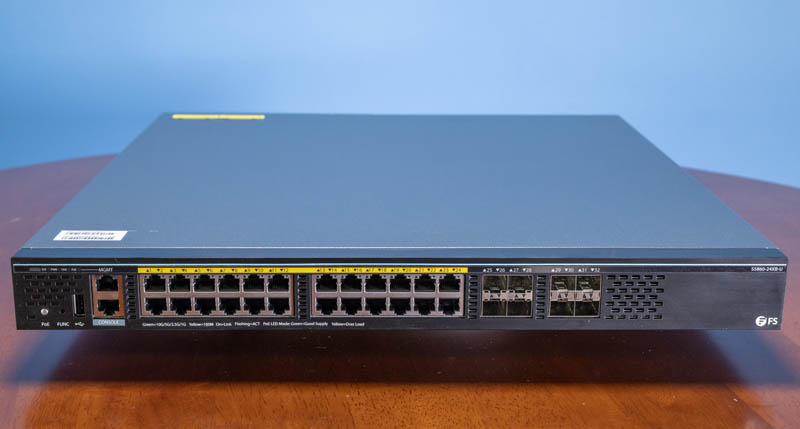
On the front of the switch, we have status LEDs, a USB port for upgrades, an out-of-band management port, and a console port. We will have a section on the management later.
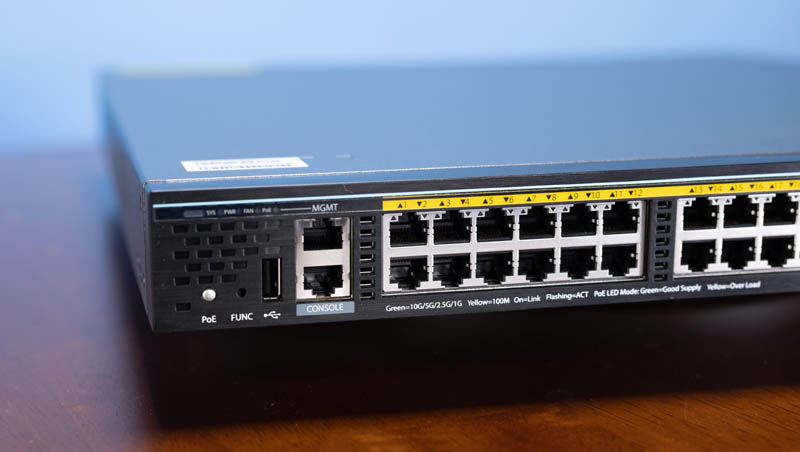
Perhaps the big feature on this switch comes in the form of the 24x RJ45 ports. These ports operate at 10Gbase-T speeds, but one can also run them at 1GbE, 2.5Gbe, and 5GbE speeds. For many, this may not sound exciting, but these are also PoE+/PoE++ capable. That means one can run WiFi 6, WiFi 6E, and the upcoming WiFi 7 access points from these ports and get a full-speed backhaul while powering the devices. 2.5GbE has been common in the WiFi 6/6E era, and we will see higher-speed ports with WiFi 7 as that launches in the next few quarters. While that is forward-looking, switches stay deployed for many years. An AP technology that in 18-24 months we expect many of our readers to deploy means that we can understand if readers are looking forward to that generation with the switches they are installing today.
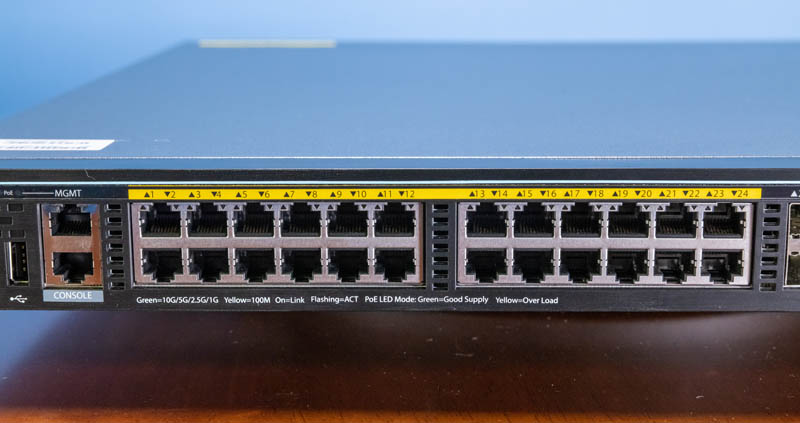
Next to these PoE 10Gbase-T ports, we have eight optical cages. Ports 25-28 are SFP+ and can run 1/ 10Gb optics. If you have other devices that connect via 10GbE and SFP+, this is what you would use for that connectivity. Ports 29-32 are perhaps more interesting. These are the 10/25GbE ports. That gives around 100Gbps of uplink capacity so the downstream ports running at full speed would oversubscribe the uplink bandwidth, but that is fairly common in this class of switch.
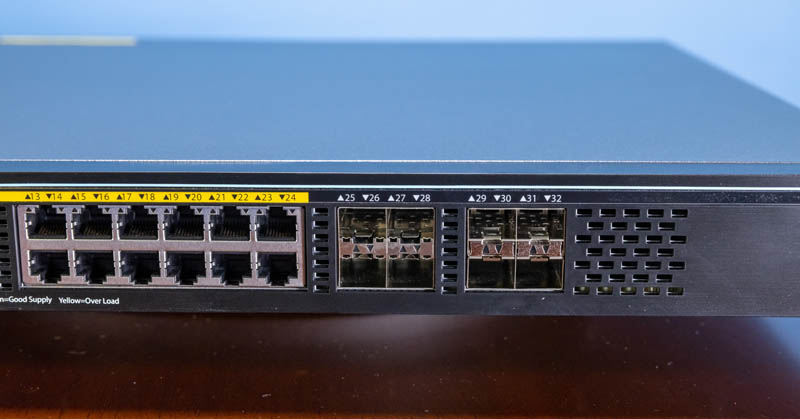
To the right, we have an airflow vent and the model name and badging. We like that all of the ports are on the front panel.
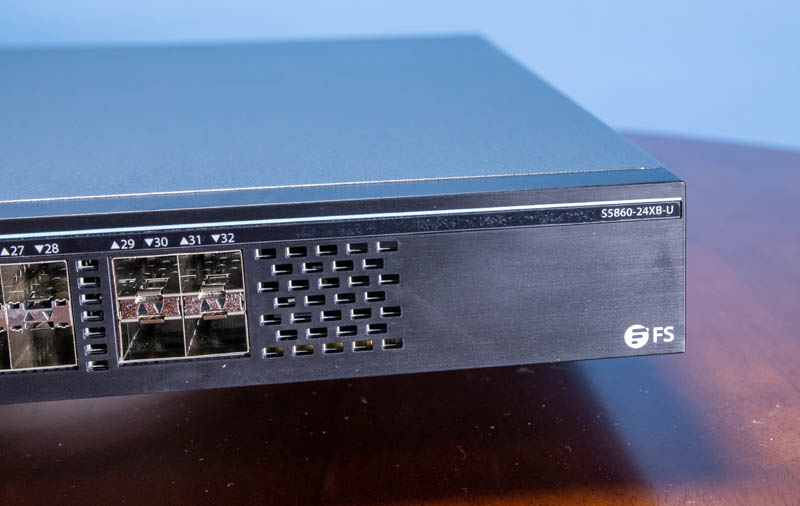
Moving to the rear of the switch, we see fans and power supplies.
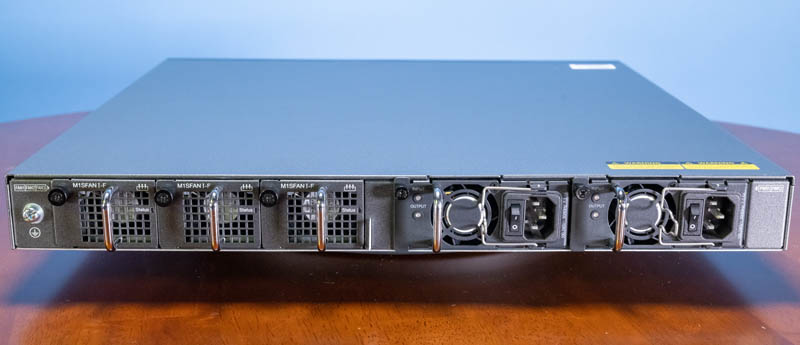
The fan modules are hot-swappable and come on these little carriers. Airflow is designed to be expelled to the rear of the chassis, but the only way to really see that is to pull out the fan and look or to decipher the airflow hieroglyph. We wish FS just used red for hot or blue for cold like other vendors in the industry.
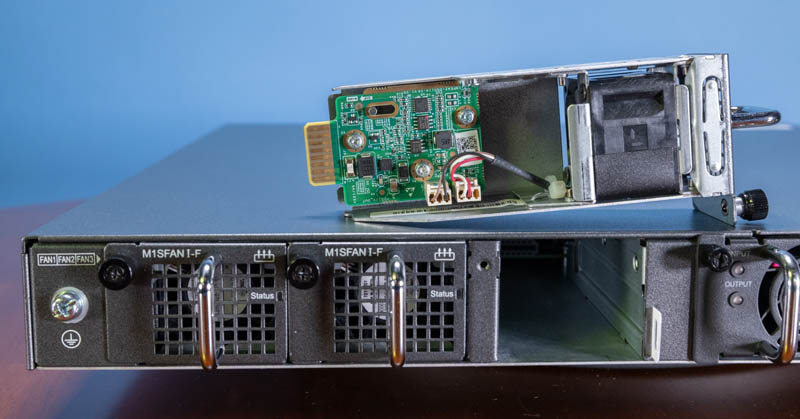
The switch also has large redundant power supplies that are hot-swappable. The PSUs also have wire locks to keep the cables connected. Something that was different on each is that they have their own on/off switch. That is not a common feature on enterprise or data center PSUs.
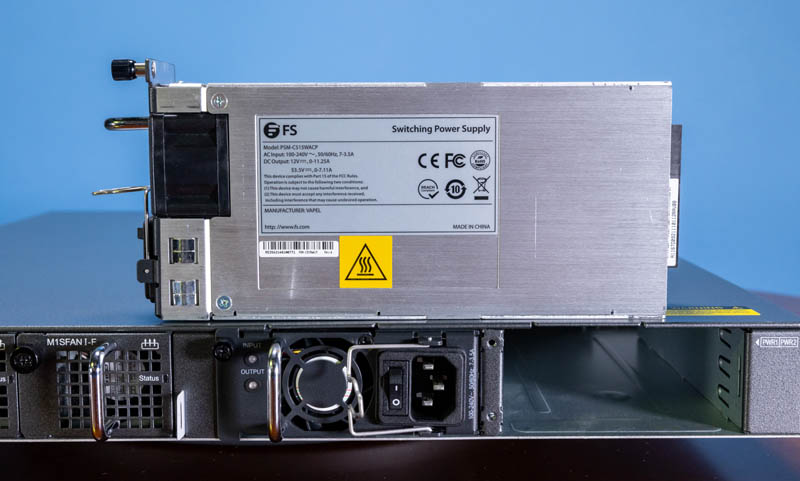
While these PSUs have FCC, CD, and other markings, we would have liked to have seen FS use a different option, perhaps something with an 80Plus Platinum rating as an example and UL markings.
Next, let us look inside the switch.





Worth noting that from looking at the picture the Fans in the fan module use non-standard connectors making it more difficult to replace them.
This switch is a L3 which explains his price, i’am looking for a L2+ switch with Multi-Gigabit and PoE and couple of 10gbit/s SFP+ but still no sign of it
@flo, have you looked at 2nd Ruckus ICX switches, they are L3, but afordable when you find them 2nd hand.
vs the 800 buck mikrotik i see mikrotik winning here as you can add poe switches for cheap if you have the need – the primary weak link for smb sector going into 2023 is networking and 100g delivers – or you can break out into 25g as well – hopefully there will be more 100gbe swicthes for under 1k coming onto the mkt soon!
This switch actually will not support the full Wifi 7 feature set: TSN is missing. The Broadcom switch family only supports it on select models. TSN is already huge in the professional content production sector (it is called AVB over there), common in smart cars and replacing legacy CAM protocols. Deterministic Ethernet is a very nice feature to have.
I’m kind of confused about the need for 10G PoE, broadcast cameras perhaps?
@Bob H: There are some switches that can pull power through PoE to power themselves, so you could put a switch in a location that is hard to power (say a couple of cameras on a parking lot light pole that has time or photo sensitive power, ie off at night). I don’t think you need 10GbE for it, but who knows.
@Bob H: While a full 24x 10GbE might be slightly overkill it is nice to have that flexibility.
I recently got two of these to go with 10G PoE Highspeed/-bandwidth cameras (5MP@200fps for a research application). Didn’t get to fully test it yet though. Probably pretty niche but it was hard finding any alternatives that don’t completely break the bank
Alpha Novatech heatsink on the main controller chip…
This usually means the company said this “F the cost, let’s get the best stuff”….
my dream switch! now when does unifi and netgear make one?